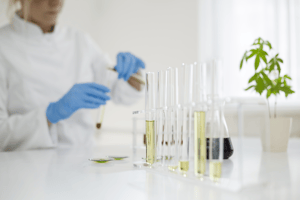In this blog, we will look at some of the key challenges facing animal health manufacturers and highlight why building a long-term relationship with the right testing partner is vital for your...
Method Development Challenges for Veterinary Medicines
Pharmaceuticals

Jun 2, 2023 | Published by Emma Woodhouse
Pharmaceuticals
As scientists work to develop new analytical methods for delivering veterinary medicines (often referred to as animal health products) to market, they face several challenges. Just like pharmaceutical products for humans, veterinary products must be shown to be manufactured in line with the marketing authorization requirements being released to the market. As per human medicinal products, veterinary medicines require finished product testing against a specification, using appropriate and validated methodologies. However, veterinary medicines can present some unique challenges when it comes to developing and validating analytical methods:
Challenge 1: Complex product matrices
The first challenge is the complex product matrices for many veterinary medicines. This is particularly true for products with active ingredients administered through animal feed. Often feeds and premixes are based on natural products such as grains which can be variable by their nature. This can present challenges in developing sufficiently specific test methods. Grains sourced from different locations may have taken on different levels of components from different soil compositions. Therefore, new interferences can appear during an analysis of the product. Additionally, premixes often contain high levels of vitamins and minerals, potentially interfering with separating and detecting the analytes of interest. During method development, scientists must use sample extraction and clean-up techniques such as Solid Phase Extraction (SPE) to maximize the specificity of the method to help address these issues. Additionally, many medicines for companion animals (such as cats and dogs) may require complex flavorings to ensure the product is enticing enough to consume. Complex flavorings can introduce significant challenges when developing methods employing chromatographic separation.
Challenge 2: Dosage Forms
Another challenge scientists face is the various dosage forms used for veterinary products. Some products are delivered as pastes, which can be highly dense and sticky, making accurate and precise measurement difficult. The right choice of solvent becomes essential as it is necessary to disperse the paste and dissolve the active ingredient and any impurities to allow accurate quantitation. Granular and feed products may be prone to settling and segregation during transport and handling, so developing robust procedures for homogenization and sampling are also critical to establishing a reliable analytical method.
It is also essential to consider all possible dosage forms in which the drug may be delivered during method development. There may be a requirement to analyze the active as a raw material even where the final delivery may be in the form of feed in an intermediate premix product. At each stage, the concentration of the analytes of interest reduces significantly; therefore, there must be a method or multiple methods to cover the range of product concentrations, potentially from 100% down to ppm level.
Challenge 3: Reference Materials
An additional challenge is in relation to sourcing reference materials. Although this is rare, when a product is not medically relevant to humans, suitable reference materials can be challenging to source. Appropriate reference materials are critical to ensuring accurate quantitation of the analytes of interest within the product.
Overcoming these Challenges
Scientists can employ various strategies to overcome dosing, matrices, and reference standard availability challenges. For dosing challenges, they must work to develop dosing mechanisms that can accurately deliver the required dose of the active ingredient, even in the face of variable and complex matrices and low concentration levels. This may involve the use of specialized equipment or the development of new formulations that are better suited to the specific needs of different animals. To address challenges related to complex matrices, scientists can work to identify the key components of these matrices and develop methods that can reliably quantify the active ingredient(s) despite these challenges. Finally, to address reference standard availability, scientists can work to develop new reference standards or find alternative materials that can be used to validate the accuracy and reliability of their methods. Through these strategies and continued innovation, it is possible to develop new methods and technologies that improve the health and well-being of animals.
Click here to learn more about our method development, validation, and transfer services


